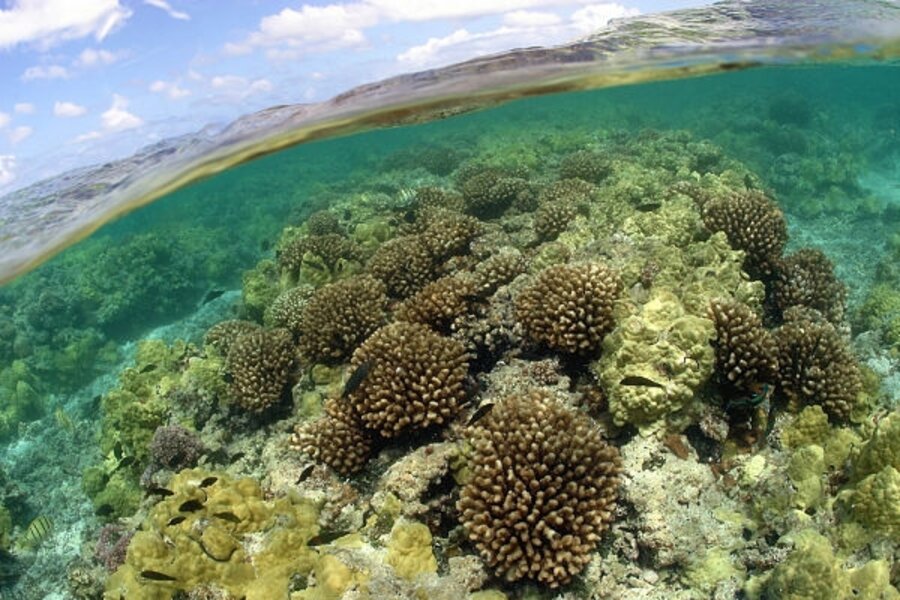A new map for a breathtaking ocean preserve
Loading...
If you're trying to understand your surroundings, there's nothing like having a decent map to guide you.
It's true for backpackers. It's true for astronomers. It's true for people trying to pinpoint earthquake hazards. And it's true for managers aiming to preserve ecosystems cradled in the Papahānaumokuākea Marine National Monument, along the Northwest Hawaiian Islands. It's the largest single marine reserve on the planet, covering nearly 140,000 square miles.
Now, scientists have drawn the first map identifying areas where humans are leaving their largest foot/flipper-prints on the monument's "pristine" reefs. The work appears in the current issue of the journal Coral Reefs. You can download a copy of their work here in PDF form.
The aim is to identify the most vulnerable portions of the marine monument and the mix of threats it faces from a range of human activities. Armed with that information, monument managers presumably will be in a better position to tailor their rules and regs in ways that blunt the most significant threats to any one portion of the monument.
"Our maps of cumulative human impacts are a powerful tool," notes Kimberly Selkoe, a scientists with Hawaii Institute of Marine Biology at the University of Hawaii and the lead author of the research paper describing the effort. "The maps can aid in zoning uses of the oceans in an informed way."
President Bush announced the monument's formation on June 15, 2006. It was the first of two major ocean conservation efforts his administration adopted during its final two years. You can read more about these efforts here, here, and here.
The threats
In terms of the shadow they cast on the monument, the leading threats Dr. Selkoe and her colleagues identified start with carbon-dioxide emissions and global warming -- resulting in coral bleaching, coral disease, and ocean acidification. The cumulative area affected spans virtually the entire monument, the team estimates.
Pollution from ships and the risk of ships striking marine creatures cover 72 percent of the monument's waters. Bottom fishing affects some 18 percent of the monument. Alien species appear to affect only 0.4 percent of the waters. Threats from marine debris and research cruises were deemed "very slight."
Of course, now comes the hard part: crafting rules and regulations that achieve the monument's conservation objectives and allow for sustainable use by the region's traditional inhabitants, commercial and recreational interests, and others.
The watchers
Undoubtedly, others will be watching.
When things got a bit testy during public hearings ahead of January's marine-monument announcement, administration officials would point to talks that led to the Papahānaumokuākea Marine National Monument as an example of successfully balancing local, regional, and even national concerns about who would have access to the waters and under what conditions with critical conservation needs.
Now that Big Papa has entered the implementation phase -- with a new baseline for assessing environmental risks -- people affected by the most recent monument designations are likely to keep close tabs on how it's being done along the string of reefs, atolls, and islands that comprise Papahānaumokuākea.
For a small inkling of why the monument was established, take a look at this video. Scientists shot the video during a research cruise to the Northwest Hawaiian Islands in 2003. The slap-the-forehead moment came as they watched a monk seal glide among corals at a depth of 1,781 feet. Now that was random! No one had thought to connect these mammals with deep sea corals before. Or maybe the seal was just messing with their heads.





